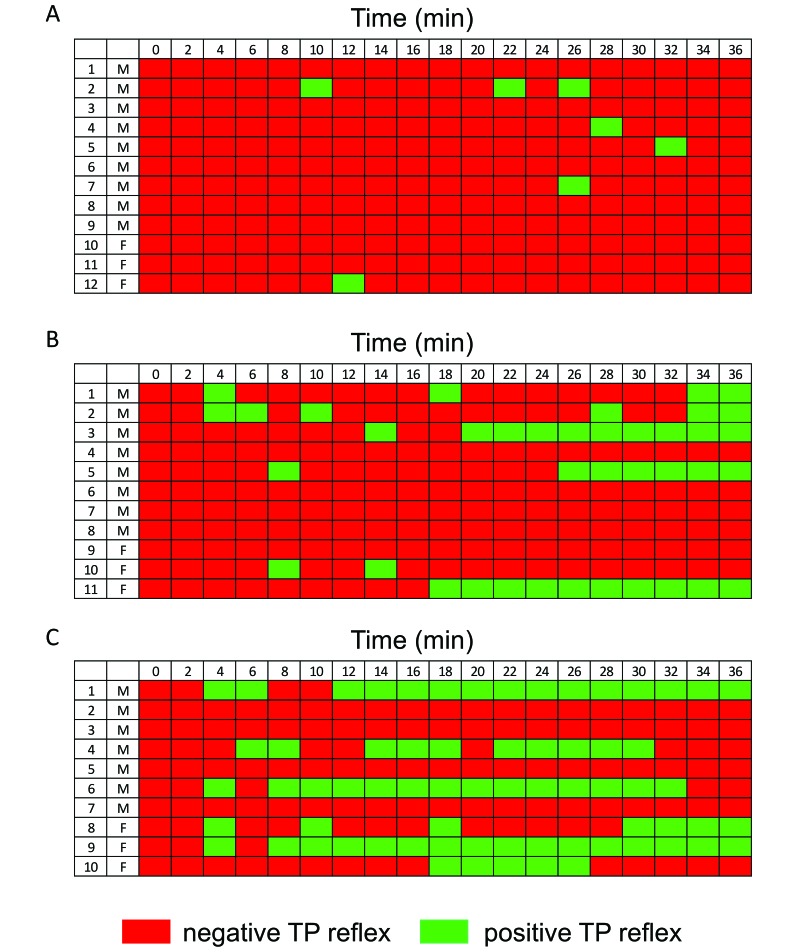Figure 2.
Quality of anesthesia during the surgical tolerance stage due to (A) isoflurane, (B) ketamine–dexmedetomidine, and (C) ketamine– xylazine (C). Rice rats were considered to be at a surgical level of anesthesia when the TP reflex was negative (red rectangles). Rats under isoflurane anesthesia had negative TP reflexes throughout the surgical tolerance stage (A, red rectangles), except for 5 rats that yielded sporadic positive TP reflexes (A, green rectangles), which were eliminated by transiently increasing isoflurane concentration. In contrast, (B) 55% of rats treated with ketamine–dexmedetomidine and (C) 60% given ketamine–xylazine displayed isolated or consecutive positive TP reflex events throughout anesthesia. Numbers indicate individual rats (F, female; M, male).

